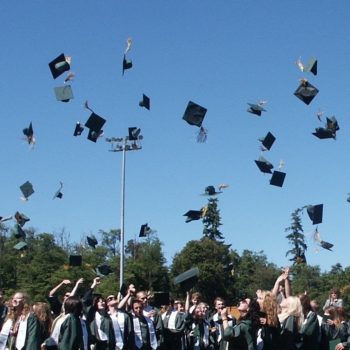How Universities Are Using Location Data to Recruit Top Talent Like Businesses
by on 13th Oct 2017 in News

Using location data helps advertisers target specific audiences for advertising, but now this data is being utilised by universities for recruiting purposes. Writing exclusively for ExchangeWire, Nate John-Grose (pictured below), sales manager, Blis, talks about how universities are finding new ways to recruit top talent by analysing location data and using advanced targeting capabilities to connect with a whole new audience.
Businesses large and small have often struggled to find good hires. Last year, according to the Society for Human Resource Management, 68% of HR professionals said they were facing challenging conditions in the hiring market. Another 84% said they were seeing a shortage of applied skills on applications.
To address these serious challenges, many businesses are finding innovative ways to recruit and secure top talent, particularly when employing location data and technology. No longer is location just about delivering ads – top universities are turning to it as a means to recruit some of the top talent in the country. By combining the rich insights location data offers with advanced targeting capabilities, universities are able to connect with potential recruits like never before.
With our digital world growing at a rate of 40% per year, many of these businesses are already turning to advanced data and technology to get the job done. Morgan Stanley, for instance, is using Snapchat ad targeting at highly ranked universities to enlist the next generation of bankers, while hospitals like Johns Hopkins have begun using geo-fence technology to find new highly qualified hires. Because location data enables these businesses to identify a highly specific group of individuals who fit their ideal candidate profile, they are able to serve ads to a hyper-targeted group of potential employees at scale.
This fall, we see the nation’s leading universities are doing the same. As high school students start filling out college applications, universities are leveraging creative new strategies to identify and recruit high-performing students. With location data and technology, university marketers can turn hard-working high school seniors into their next year’s incoming freshmen class, or prompt experienced faculty members from other universities to join their team. Moreover, location data can help universities raise awareness about their academic profiles and stand out among the 4,000 colleges and universities in the US.

Nate John-Grose, Sales Manager, Blis
First, universities can identify their ideal audiences by looking at where high school students spend their time – and creating a geofence around those spaces. For instance, university marketing teams can geofence high schools, university sports venues, or academic conference centers to identify potential recruits. They can also use location data to identify students who are considering applying to a competitor: by geo-fencing a competing school, universities can identify high school students attending another school’s open day or campus tour.
Next, universities can serve ads to these individuals in real-time or save their anonymous device IDs for retargeting later. This is how 160over90, the leading branding and marketing consultancy in higher education (whose work also spans across iconic consumer brands like Nike, Under Armour, AAA, and Save-A-Lot), has been helping colleges across the country identify and target high-quality applicants – and, ultimately, curate a better class.
“To boost and optimise 2018 enrollment, and open the aperture on our higher education clients’ communications strategies, we are using location data to geofence their top feeder high schools and key growth markets to reach prospective students, as well as their parents, guidance counselors, and other key influencers”, said John Campanella, CEO and principal of 160over90. “By analysing where high school students go, universities are gaining rich insights into the habits, attitudes, and behaviours of potential students.”
University marketers can also learn more about these students by analysing their location patterns over time. For example, by combining a high school or current student’s activities – whether in the lab, at the gym, or at other community-related events, one can start to identify key interests of that student that allow for marketers to communicate messages that will resonate most for that student. Interestingly, universities can also leverage this data to shape and inform opportunities to direct undeclared students toward certain majors or focal areas that best align with their interests.
Finally, with an in-depth reporting tool, universities can make sure they make the most of each campaign. By measuring real-time audience behaviour during and after each campaign, universities can find out which ads perform best based on a number of characteristics, including time of day delivered and audience location. They can then use this data to continuously optimise their campaigns.
With application deadlines quickly approaching, universities must begin building relationships with students today. When they do, they’ll not only find ideal new recruits and see higher application rates; they’ll also generate greater awareness about what they have to offer– and find themselves moving up the list of college rankings.








Follow ExchangeWire